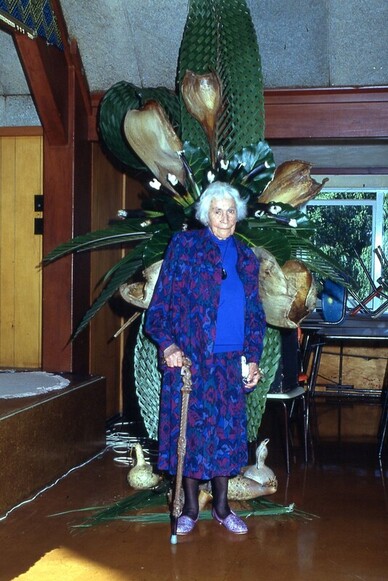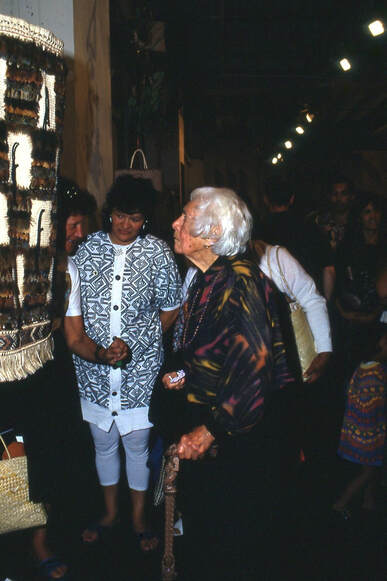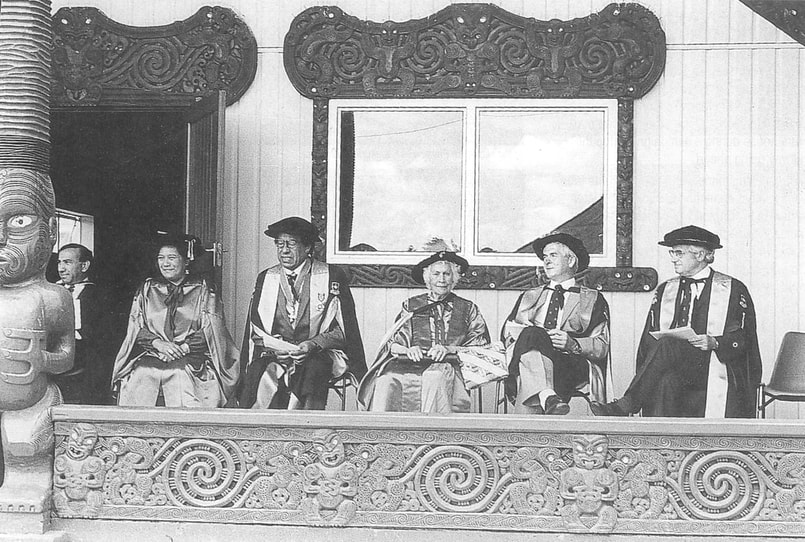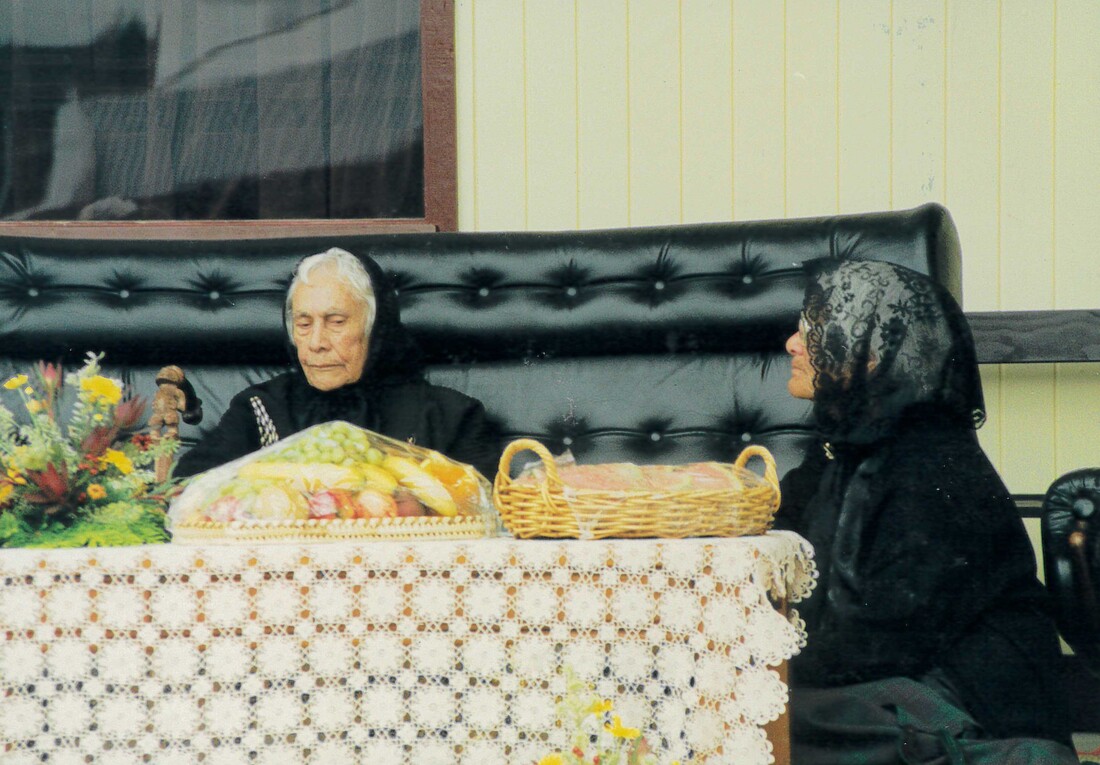Kete Kōrero: Dame Rangimārie Hetet and the Kai Kete
|
These five kete were made by master weaver Dame Rangimārie Hetet (24 May 1892 – 14 June 1995). Originally made for a conference in Wellington, it was decided that these taonga would be kept at her home in Te Kuiti. They were later purchased for Te Roopu Raranga Whatu o Aotearoa by Garry Nicholas, General Manager at Toi Māori Aotearoa.
Dame Rangimārie was widely acknowledged in her lifetime as the leading authority in the art of Māori weaving. Her acclaimed kākahu have been presented to overseas dignitaries, held in museum collections, and exhibited throughout Aotearoa and the world. These everyday kete, however, provide a different insight into Dame Rangimārie’s life and work. Dame Rangimārie Hetet at the Moananui-a-Kiwa Weavers Symposium, Te Ngira marae, Papakura, 1993. Photographs by Margaret Kawharu.
Rangimarie’s skills in the arts of whatu, tāniko, and raranga were first taught to her as a young girl by her mother (Mere Te Rongopāmamao Aubrey) and other Ngāti Maniapoto kūia, however it was not until the 1950s that her weaving talents began to take prominence. It was then that the Māori Women’s Welfare League asked Rangimārie, who was a founding league member, to teach the artform to other wāhine in the community and to tamariki in schools. Rangimārie recognised that the knowledge had to be shared, otherwise it would be lost, and she agreed to teach anyone who was willing to learn regardless of hapū or iwi. This was contrary to the restrictions on learning protocols of the past, but representative of the steadfast leadership shown by the Māori Women’s Welfare League and their contribution to Māori wellbeing in a rapidly changing society.
By the 1960s, Rangimārie had taught hundreds of people, with the kete being a focus of their learning journey. Her teaching also progressed to demonstrations and then exhibitions of her work, and she became known as an expert in kākahu in particular, earning her a prestigious reputation on an international scale. Among her innumerable honours and awards, she was made a life member of the Māori Women’s Welfare League, granted an honorary doctorate from the University of Waikato, and appointed as a Member of the Order of the British Empire (MBE) in 1973 – later promoted to Commander (CBE) in 1984 and then Dame (DBE) in 1992. Rangimārie Hetet (third from right) receives her honorary doctorate, Waikato University, 1986. Image scanned from TRRWoA newsletter (issue no. 22).
Dame Rangimarie retired from teaching in the 1980s, but this did not dull her passion for weaving. Despite her failing eyesight and arthritis of the hand, she continued to weave until she passed in 1995. Dame Rangimārie’s work thus spans most of the twentieth century, and she is now almost singlehandedly credited with the survival of Māori weaving as an artform. She has left behind a legacy of memories and more than one hundred direct descendents who will carry on the art of Māori weaving for many generations to come.
“Her life hasn’t ended so much as it has been completed. And there’s a big difference. No one can complain at that.” (Ata Putaranui)
The five kete held in the Toi Māori Aoteaora collection were completed in 1993 when Dame Rangimārie was 101 years old. Made using the same techniques that she would have been shown as a young girl at the beginning of the twentieth century, these kete are testiment to Dame Rangimārie’s innate talent and passion for weaving, and uphold the mana of the kai kete as a foundation of the art of raranga.
Kai kete take a variety of forms and patterns according to their function, and their quality is determined by how well the kete serves the purpose for which it was made. These attributes have ensured that the kai kete has remained valuable over time, though they are no longer as widespread or common as they once were. Dame Rangimārie Hetet (left) at the Moananui-a-Kiwa Weavers Symposium, Te Ngira marae, Papakura, 1993. Photograph by Edna Stirling.
Often, kai kete are not given the same attention as kete whakairo, which make use of more complex techniques and design innovations, and are the focus of attention in exhibitions and publications on Māori weaving. Thus, it may be said that the art of the kai kete is now undervalued. Rangimārie’s kete, however, remind us of the importance and significance of the kai kete, and the role that kete may play in the future as sustainable and reusable bags suitable for everyday use across many different contexts.
Unlike kete whakairo, which are generally kept separate from everyday life, kai kete are made to be used and touched. Their beauty lies in their imperfections and impermanence, in the simplicity of their function and simultaneous finesse of their make. They are the genesis of grandeur and innovation, for the kete whakairo cannot be achieved without first mastering the practical, everyday kete. Written by Lily Kara-Liu (Waikato-Tainui, Ngāpuhi). 21 Feb 2023.
|





